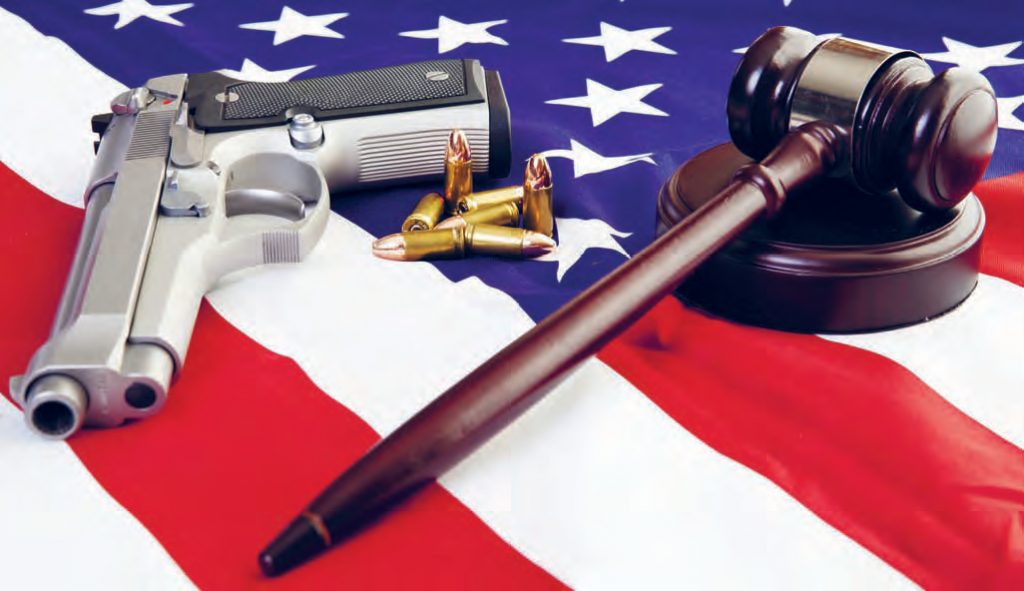 The Orlando night club shooting in America shocked humanity. It was the deadliest attack on American soil since 9/11 and the worst mass shooting by a single gunman in the US history. Omar Mateen, a 29-year-old American, armed with a SIG Sauer MCX semi- automatic rifle and a 9mm Glock 17 semi-automatic pistol, entered the gay nightclub Pulse in Orlando and killed 49 people and injured 53. Mateen legally purchased those two guns from a shop in Port St. Lucie two weeks before the shooting.
The Orlando night club shooting in America shocked humanity. It was the deadliest attack on American soil since 9/11 and the worst mass shooting by a single gunman in the US history. Omar Mateen, a 29-year-old American, armed with a SIG Sauer MCX semi- automatic rifle and a 9mm Glock 17 semi-automatic pistol, entered the gay nightclub Pulse in Orlando and killed 49 people and injured 53. Mateen legally purchased those two guns from a shop in Port St. Lucie two weeks before the shooting.
This incident has raised questions over the easy acquisition of guns in America. Gun control has been one of those most incendiary debates to take place in America. The right to bear arms, for many Americans, is not just seen as a legal but a fundamental, unconditional right. Then there are those who have raised the red flag over the fact that around 31% of the world’s mass shootings occur in the US. Rough estimates suggest that there are 300 million firearms in the country. The chances of Americans to be murdered are seven times more than people in 12 similar developed countries. The chances of being murdered by a gun in America are 20 times more.
In 2015, gun death rates in the US were 11.2 per 100,000 people. According to a 2014 study, guns hurt or kill about 10,000 American children each year. According to reports published in The Guardian, more than 10,000 Americans will likely be killed in gun murders this year. Another 20,000 will likely be lost to gun suicide. The total number of gun deaths and violent injuries will be close to 100,000.
US President Barack Obama had said last year after a mass shooting at a college in Oregon, “We know that other countries, in response to one mass shooting, have been able to craft laws that almost eliminate mass shootings.” According to American gun rights advocates, the reason why America can’t imitate Australia is because this kind of confiscation would prompt a “civil war”. “It’s confiscation of private property and the threat of jail, and that’s not the American way,” said Philip Alpers, a gun violence researcher at the University of Sydney. Just a day after the Orlando attack, Democratic Party presidential nominee Hillary Clinton also spoke at length about the need for stricter gun control laws. “If the FBI is watching you, you shouldn’t be able to just buy a gun. If you’re too dangerous to get on a plane, you are too dangerous to buy a gun,” she said, referring to the fact that the shooter, Omar Mateen, had pre-viously been under FBI surveillance for suspected terrorist ties.
Countries with strict gun control laws
Australia has emerged as an example for those countries with strict gun control laws. Around two decades ago, Australia passed strict gun laws after a mass shooting in a café in Tasmania. In 1996, a 28-year-old man shot and killed 25 people in a café and injured 23. Immediate changes were made in the gun laws; chief among them was a ban and mandatory buyback of more than 600,000 semiautomatic rifles and other long guns, which were melted down. According to reports, the Australian government then destroyed a million weapons which totalled around one-third of the country’s gun stock. This step was applauded by all including Hillary Clinton who said that “Australia example is worth looking at”.
Not only Australia but countries like Great Britain and Japan too have succeeded in passing such laws. In 1996 an assassin had shot and killed 16 first graders and teachers at an elementary school in Dunblane, Scotland. Soon after the attack Britain put a ban on handguns.
Japan is another example of a country with zero-tolerance policy towards gun ownership. According to police records, as of 2011 legal gun ownership stood at 271,000, in a country of 127 million people. Japan’s 1958 law on the ‘possession of swords and firearms’ states: “No one shall possess a firearm or firearms or a sword or swords.”
In Germany, private ownership of firearms was not allowed till 1956. Gun legislation in Germany is considered to be the strictest in the world. Though Germany has one of the highest weapons-per-head rates in the world, but it doesn’t see cases of mass killing. Germany is the only country in the world where anyone under the age of 25 who applies for their first firearms licence must undergo a psychiatric evaluation with a trained counsellor. This step was taken after a 19-year-old boy shot dead 16 students at his school in the Thüringen state capital, Erfurt after being expelled from the school in 2002.
What is India’s situation?
Before 1987, licences for acquisition and possession of both Prohibited Bore (PB) and Non- Prohibited Bore (NPB) firearms could be given by the state government or district magistrate but later, the issue of licences for PB firearms became the responsibility of the central government. The licence is valid for three years and needs to be renewed.
Add new comment